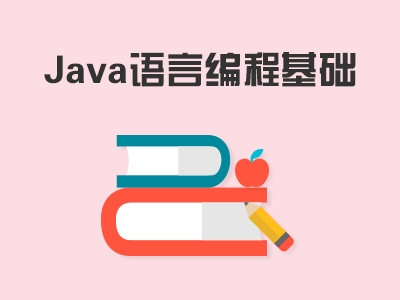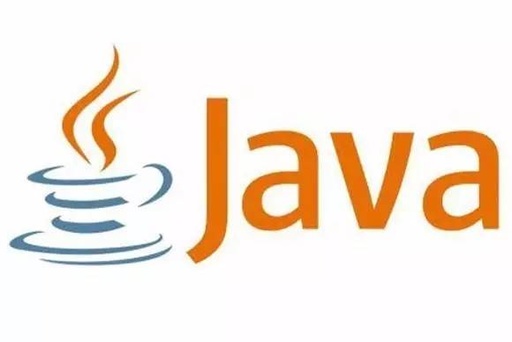Recommend 10 commonly used Java virtual machine usage articles
This article mainly introduces relevant information on the detailed explanation of the memory runtime data area managed by the Java virtual machine. Friends who need it can refer to the detailed explanation of the memory runtime data area managed by the Java virtual machine. The Java virtual machine executes the Java program. In the process, the memory it manages is divided into several different data areas. These areas have their own purposes, as well as the time of creation and destruction. Some areas exist with the startup of the virtual machine process, and some areas are created and destroyed depending on the start and end of the user thread. Program Counter The program counter is a small memory space that can be regarded as a line number indicator of the bytecode executed by the current thread. In the conceptual model of the virtual machine, the bytecode interpreter works by changing the value of this counter to select the next bytecode instruction that needs to be executed. Basic functions such as branches, loops, jumps, exception handling, and thread recovery are all Need to rely on this counter to complete. If the thread is executing a Java method, this counter records the virtual method being executed.
1. Detailed introduction to memory operation

Introduction: This article mainly introduces the relevant information on the memory runtime data area managed by the Java virtual machine. Friends in need can refer to the detailed explanation of Java Overview of the memory runtime data area managed by the virtual machine During the process of executing a Java program, the Java virtual machine will divide the memory it manages into several different data areas. These areas have their own purposes, as well as the time of creation and destruction. Some areas exist with the startup of the virtual machine process, and some areas are created and destroyed depending on the start and end of the user thread. Program counting...
2. 10 recommended articles about program memory

Introduction: This article mainly introduces relevant information on the analysis of program memory in Java. Friends in need can refer to this article to briefly explain the JVM when we run a Java program. (Java virtual machine) memory allocation. First, let’s get to know a few nouns perceptually: 1. Stack. Generally speaking, basic data types allocate space directly on the stack, and local variables (variables defined in the method code segment) also allocate space directly on the stack. , when the method where the local variable is located is executed, the space will be immediately reclaimed by the JVM. There is also a reference data type, which we usually...
3. About Detailed introduction to the data area
#Introduction: 1. Program counter line number indicator of the bytecode executed by the current thread. 2. The Java virtual machine stack thread is private and has the same life cycle as the thread. Used to store information such as local variable tables, operand stacks, dynamic linked lists, method exits, etc. Local variable table storage content: basic data types (boolean, byte, char, short, int, float, long, double) object reference (different from symbol reference, symbol reference is stored in the constant pool) returnAddress type (points to a bytecode instruction Address) 64...
4. JVM Learning Java Runtime Data Area

Introduction: Program counter Line number indicator of the bytecode executed by the current thread. 2. Java virtual machine stack is thread private and has the same life cycle as the thread. Used to store information such as local variable tables, operand stacks, dynamic linked lists, method exits, etc.
5. Detailed explanation of Java memory allocation and recycling mechanism (picture)
 # #
# #
Introduction: This article mainly talks about the allocation and recycling mechanism of Java memory, mainly including the Java runtime data area, object creation, garbage collection algorithm and recycling strategy. The reference book is "In-depth Understanding of Java Virtual Machine" by teacher Zhou Zhiming. The author only summarizes and illustrates it based on the content in the book. This part of the content is almost all comprehensible. In order to facilitate understanding and memory, it is presented in the form of pictures, texts or tables as much as possible. 1. Runtime data area The following figure is a memory diagram of the Java virtual machine when it is running: From the figure we can see that the Java memory is divided into...
6. A detailed introduction to the memory runtime data area managed by the Java virtual machine

Introduction: This article mainly introduces For detailed information on the memory runtime data area managed by the Java virtual machine, friends in need can refer to
7. Detailed explanation of the Java JVM virtual machine operating mechanism

Introduction: JVM (Java Virtual Machine) A specification for computing devices that can be used in different ways (software or hardware) to be implemented. Next, I will give you a brief introduction to the Java JVM virtual machine operating mechanism through this article. Friends who are interested should take a look together
8. Detailed introduction to object access in the Java virtual machine (Figure )

Introduction: This article mainly introduces the relevant information on the detailed explanation of object access in the Java virtual machine. Friends in need can refer to
9. Code sharing for implementing a universal concurrent object pool using Java

Introduction: In this article we mainly discuss how to implement an object pool in Java. In recent years, the performance of the Java virtual machine has been greatly improved in all aspects, so for most objects, there is no need to use object pools to improve performance. The fundamental reason is that creating a new object is not as expensive as it used to be. However, there are still some objects whose creation overhead is very high, such as threads, database connections and other non-lightweight objects. In any application, we will definitely use more than one such object. If there is a very convenient way to create and manage a pool of these objects, so that these objects can move...
10. Detailed explanation of the working principle of the Java virtual machine (pictures and text)

Introduction: This article mainly introduces the working principle of the Java virtual machine. Has very good reference value. Let’s take a look with the editor below
[Related Q&A recommendations]:
Java’s StringPool is stored in the method area. Is it shared by all classes?
jvm - A program that crashes the Java virtual machine
java - Are there any recommended books about JVM that are not that difficult?
jvm - What is the default encoding of the Java virtual machine?
The above is the detailed content of Recommend 10 commonly used Java virtual machine usage articles. For more information, please follow other related articles on the PHP Chinese website!

Hot AI Tools

Undresser.AI Undress
AI-powered app for creating realistic nude photos

AI Clothes Remover
Online AI tool for removing clothes from photos.

Undress AI Tool
Undress images for free

Clothoff.io
AI clothes remover

AI Hentai Generator
Generate AI Hentai for free.

Hot Article

Hot Tools

Notepad++7.3.1
Easy-to-use and free code editor

SublimeText3 Chinese version
Chinese version, very easy to use

Zend Studio 13.0.1
Powerful PHP integrated development environment

Dreamweaver CS6
Visual web development tools

SublimeText3 Mac version
God-level code editing software (SublimeText3)

Hot Topics
 1376
1376
 52
52
 How does Java's classloading mechanism work, including different classloaders and their delegation models?
Mar 17, 2025 pm 05:35 PM
How does Java's classloading mechanism work, including different classloaders and their delegation models?
Mar 17, 2025 pm 05:35 PM
Java's classloading involves loading, linking, and initializing classes using a hierarchical system with Bootstrap, Extension, and Application classloaders. The parent delegation model ensures core classes are loaded first, affecting custom class loa
 How do I implement multi-level caching in Java applications using libraries like Caffeine or Guava Cache?
Mar 17, 2025 pm 05:44 PM
How do I implement multi-level caching in Java applications using libraries like Caffeine or Guava Cache?
Mar 17, 2025 pm 05:44 PM
The article discusses implementing multi-level caching in Java using Caffeine and Guava Cache to enhance application performance. It covers setup, integration, and performance benefits, along with configuration and eviction policy management best pra
 How can I implement functional programming techniques in Java?
Mar 11, 2025 pm 05:51 PM
How can I implement functional programming techniques in Java?
Mar 11, 2025 pm 05:51 PM
This article explores integrating functional programming into Java using lambda expressions, Streams API, method references, and Optional. It highlights benefits like improved code readability and maintainability through conciseness and immutability
 How can I use JPA (Java Persistence API) for object-relational mapping with advanced features like caching and lazy loading?
Mar 17, 2025 pm 05:43 PM
How can I use JPA (Java Persistence API) for object-relational mapping with advanced features like caching and lazy loading?
Mar 17, 2025 pm 05:43 PM
The article discusses using JPA for object-relational mapping with advanced features like caching and lazy loading. It covers setup, entity mapping, and best practices for optimizing performance while highlighting potential pitfalls.[159 characters]
 How do I use Maven or Gradle for advanced Java project management, build automation, and dependency resolution?
Mar 17, 2025 pm 05:46 PM
How do I use Maven or Gradle for advanced Java project management, build automation, and dependency resolution?
Mar 17, 2025 pm 05:46 PM
The article discusses using Maven and Gradle for Java project management, build automation, and dependency resolution, comparing their approaches and optimization strategies.
 How do I use Java's NIO (New Input/Output) API for non-blocking I/O?
Mar 11, 2025 pm 05:51 PM
How do I use Java's NIO (New Input/Output) API for non-blocking I/O?
Mar 11, 2025 pm 05:51 PM
This article explains Java's NIO API for non-blocking I/O, using Selectors and Channels to handle multiple connections efficiently with a single thread. It details the process, benefits (scalability, performance), and potential pitfalls (complexity,
 How do I create and use custom Java libraries (JAR files) with proper versioning and dependency management?
Mar 17, 2025 pm 05:45 PM
How do I create and use custom Java libraries (JAR files) with proper versioning and dependency management?
Mar 17, 2025 pm 05:45 PM
The article discusses creating and using custom Java libraries (JAR files) with proper versioning and dependency management, using tools like Maven and Gradle.
 How do I use Java's sockets API for network communication?
Mar 11, 2025 pm 05:53 PM
How do I use Java's sockets API for network communication?
Mar 11, 2025 pm 05:53 PM
This article details Java's socket API for network communication, covering client-server setup, data handling, and crucial considerations like resource management, error handling, and security. It also explores performance optimization techniques, i




